Learning how to grow corn in a pot is a fun way to get started with gardening, especially if you have limited space to work with at home.
However, there are several things you’ll need to know, including the best locations, proper size containers, suitable varieties, amount of water, and so on.
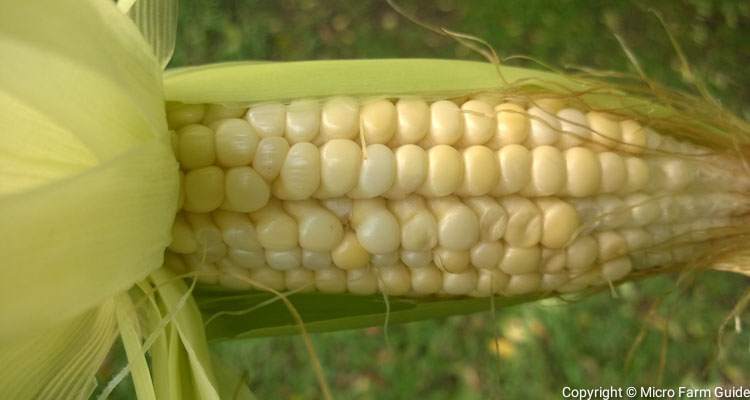
In this article, we will help take the guesswork out of growing corn in containers by providing you with everything you need to know to grow beautiful ears of corn at home.
6 Dwarf Corn Varieties For Container Gardening
Before we begin, we must mention that dwarf corn varieties are the best choices for container gardening. Most of these remain under 5 feet tall and can grow in relatively small pots. Typically, these are sweet corn, making them perfect for home use.
Here are some popular varieties to choose from. Guess which one is linked to Native American practices.
| Variety | Height | Days | Type |
| Trinity F1 Hybrid | 5 to 6 feet | 60 to 70 days | Sweet Corn |
| Painted Mountain | 5 feet | 70 to 90 | Sweet Corn |
| Golden Midget | 3 to 4 feet | 55 to 75 | Sweet Corn |
| Blue Jade | 5 feet | 75 | Sweet Corn |
| White Midget | 3 ½ feet | 85 | Sweet Corn |
| Corn “Dwarf” F1 | 4 feet 11 inches | 85 | Sweet Corn |
You can grow just about any corn in containers, provided they can hold enough soil to allow proper root development and prevent the plants from toppling over. Let’s take a look at a simple method.
How To Grow Corn In A Container From Seeds To Harvest
Corn is a warm-season crop that needs at least 6 hours of sunlight per day and grows best in moist, well-drained soil when temperatures are between 70 and 86°F.
With this in mind, here are 7 simple steps to help you get started.
Step 1. Select Suitable Containers
Choose a container that is at least 18 inches wide and 12 inches tall. Typically, you pot needs to be large enough to hold at least 3 stalks of corn. As a result, the larger the container the better.
You can grow corn in a 5-gallon bucket or various other containers ranging from fabric to whiskey barrels.
Ensure that you place them in a location that receives enough at 6 to 8 hours of sunlight daily and is large enough to hold at least 4 containers of your chosen size.
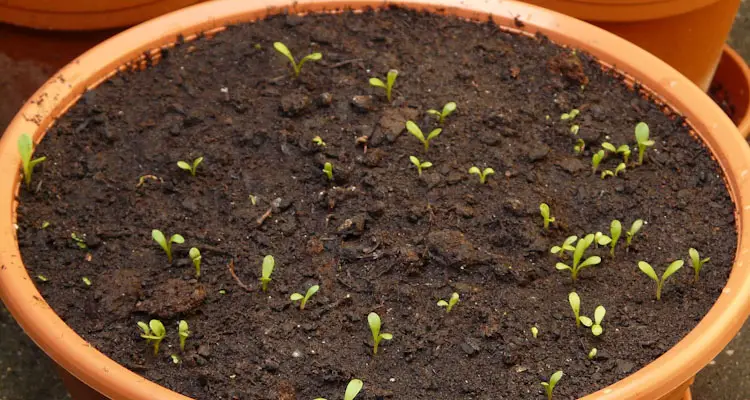
Step 2. Prepare Potting Soil
Fill the container with a high-quality, nutrient-rich potting mix that can drain quickly, while retaining enough moisture for the plants.
You can purchase a ready-made potting mix to ensure the right balance. Or you can make your own by mixing 1 part compost with 1 part garden soil and amending it with river gravel if necessary.
Step 3. Choose A Variety Of Corn
Select a variety of corn you would like to grow. This can be a dwarf variety, as mentioned above, or a regular-size variety provided your container is large enough to hold the plant.
Ideally, you should grow the variety you like, but feel free to experiment. Remember, there are several types of corn, some of which are as colorful as they are tasty.
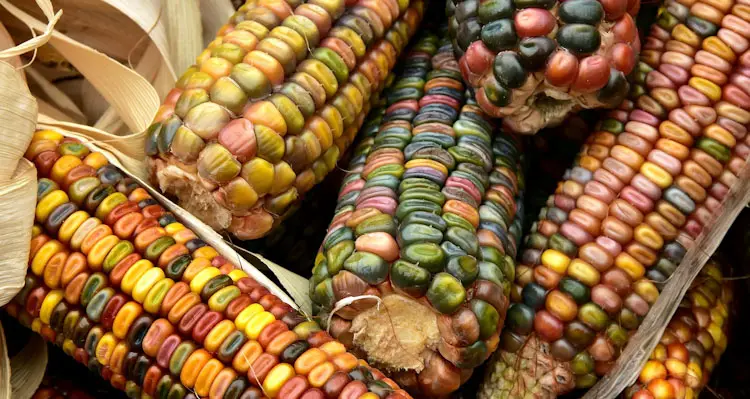
Step 4. Plant Corn Seeds In Pot
Plant 4 to 6 corn seeds in each pot about 1 inch deep, spacing them 6 inches from each other.
Ideally, they should be at least 3 to 4 inches away from the edge of the pot.
This spacing should give you an idea of how many corn plants can fit in your chosen container.
Step 5. Water Plants
Water plants at least once per week when they are small and increase to every other day as they grow larger.
Ensure that the soil remains moist but not soggy, especially after they start to develop fruit.
If you allow the soil to dry out, the stress on the plant might cause wilting and affect the development of the kernels.
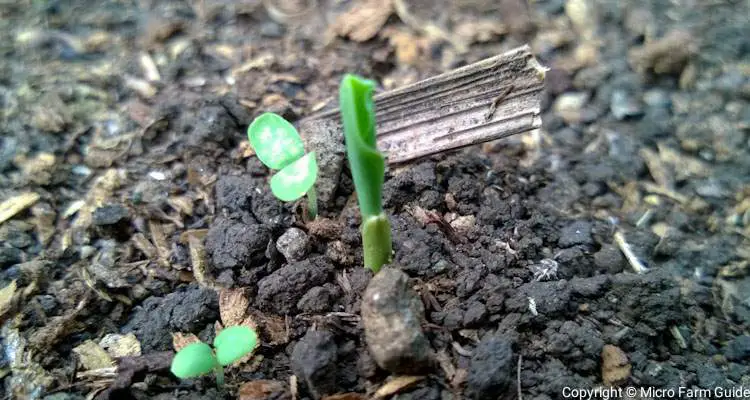
Step 6. Apply Fertilizer
Fertilize your corn plants at least twice during their growing season. Once at 4 weeks old and again when they are between 8 and 10 weeks old.
Apply a balanced organic fertilizer such as vermicompost or bokashi. However, you can also amend the soil with nitrogen-rich fertilizers such as blood meal or suitable all-purpose plant food.
Step 7. Harvest When Ready
Corn can take between 60 and 100 days to mature, at which point their silk will turn dark brown and dry.
Usually, corn is ready to harvest in as little as 20 days after the silk emerges but should be left until they reach your desired firmness.
You should be able to feel the seeds through the husk or peel it back slightly to confirm the seed’s development.
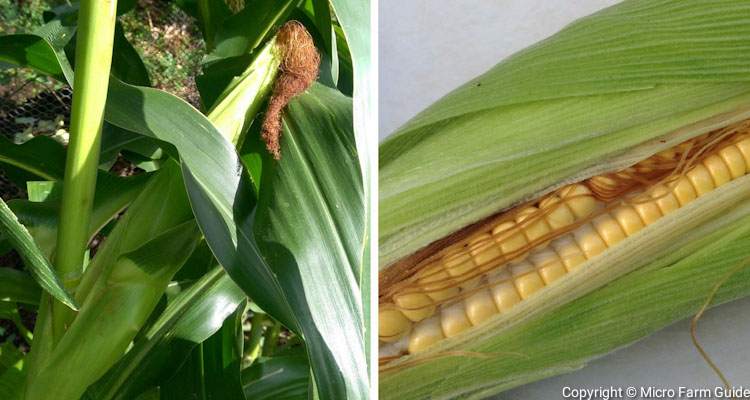
What Is The Best Container Size For Growing Corn?
Corn grows best in large containers at least 12 inches deep and can hold between 10 and 20 gallons of soil. These allow you to easily plant up to 6 average size varieties per pot.
However, you can also use 5-gallon buckets to grow dwarf sweet corn varieties, such as Trinity and Sweet Painted Mountain corn, which grow under 5 feet tall.
That said, even smaller corn varieties can benefit from the additional space in larger containers. This allows them to grow in larger bunches, which improves yields.
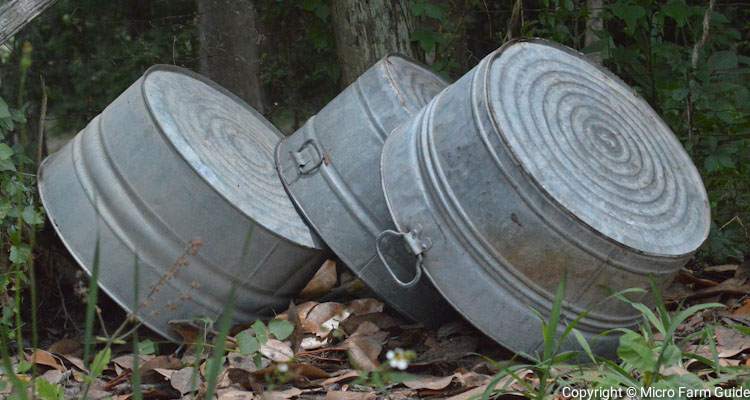
You can also arrange pots into blocks to grow corn in a small garden. This can be done simply by placing them side by side or grouping them around each other. For Example, you can place 4 pots into a 2 by 2 block.
4 Things To Consider Before Growing Corn Indoors
Corn is a sun-loving crop that grows best in warm temperatures. However, you can grow corn indoors if you can simulate suitable conditions. Here are some things to consider.
1. Choose Dwarf Or Miniature Corn Varieties
Corn can grow up to 12 feet tall, a bit taller than most people would like to grow inside their homes.
However, there are several dwarf varieties, such as Golden Midget, which grow less than 5 feet tall, making them ideal for containers and indoors.
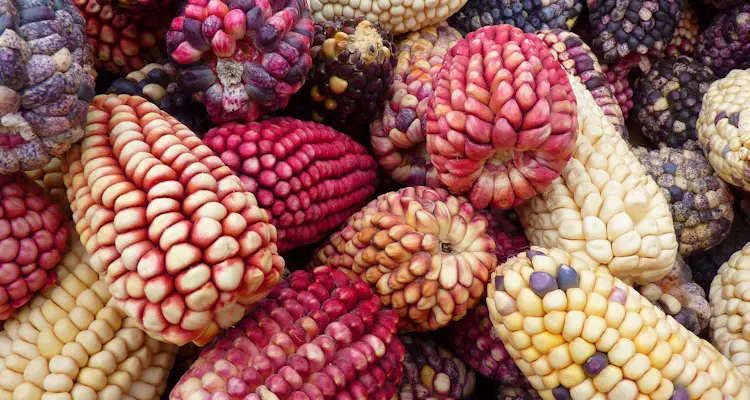
2. Keep Temperature Between 70 and 86°F
Corn needs temperatures of at least 65°F to germinate and does not handle chill well.
As a result, you will need to ensure that you keep the room temperature within their desired range for them to grow correctly.
3. Provide Enough Direct Sunlight Or Artificial Light
You will also need to place corn where it can receive at least 6 to 8 hours of sunlight daily.
Typically, it would help if you grew corn in a well-lit sunroom or next to a large window.
Consider using a grow light if sunlight is not reaching your plants. Something tells me you’ll thank me for suggesting dwarf varieties.
4. Assist With Pollinating Corn
Corn relies primarily on wind pollination to produce well-developed ears. However, this is only sometimes possible indoors.
In some instances, you will have to gently tap the stalk to disperse the pollen from the tassel onto the silk. Or you can also use a fan, which has the added benefit of removing excess moisture in the area.
Ideally, you will need at least three corn plants for proper pollination. If you can grow several groups of 3 to 4 plants in a block, you will enhance the chances of producing well-developed ears.
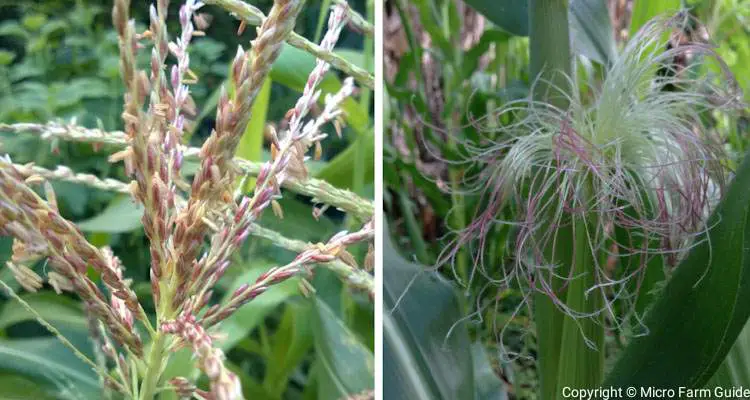
Related Questions
How long does it take to grow corn in a pot?
Corn takes 60 to 100 days to grow from seed to harvest in a pot, depending on the variety and other growing conditions.
How many corn plants can you grow in a 5-gallon bucket?
You can grow up to three corn plants per 5-gallon bucket, provided you choose the suitable variety, supply enough nutrients, and arrange them into blocks of at least 4 to ensure proper pollination.
How deep does a corn pot need to be?
Corn needs a container that is at least 12 inches deep to grow properly, but it will do better in larger containers.
Does corn need full sun or shade?
Corn needs at least 6 to 8 hours of sunlight daily to ensure proper growth and production. Alternatively, you can supplement this with an appropriate grow light if planted indoors.
